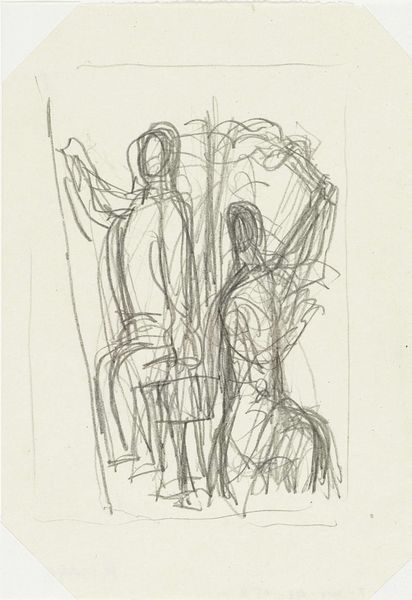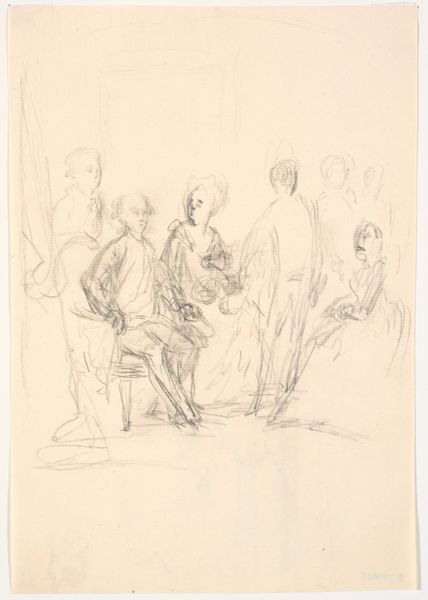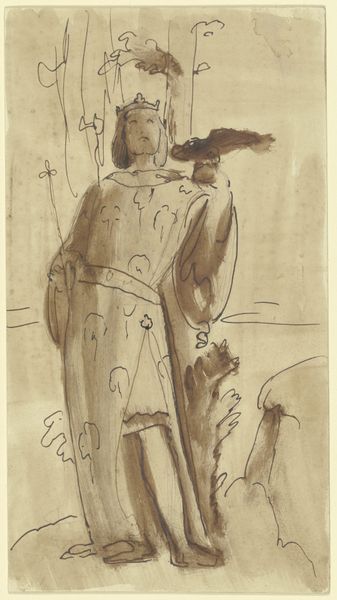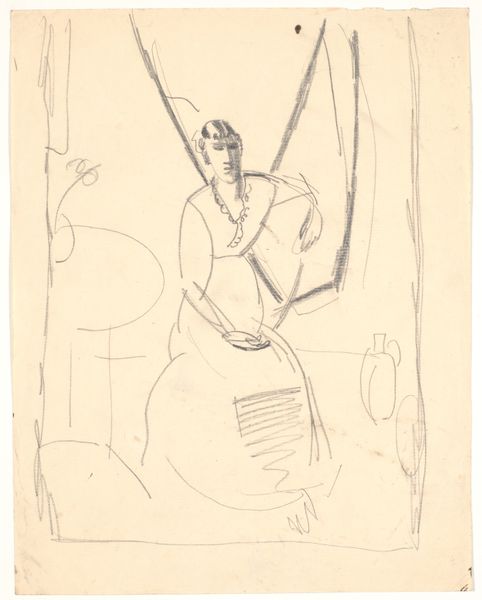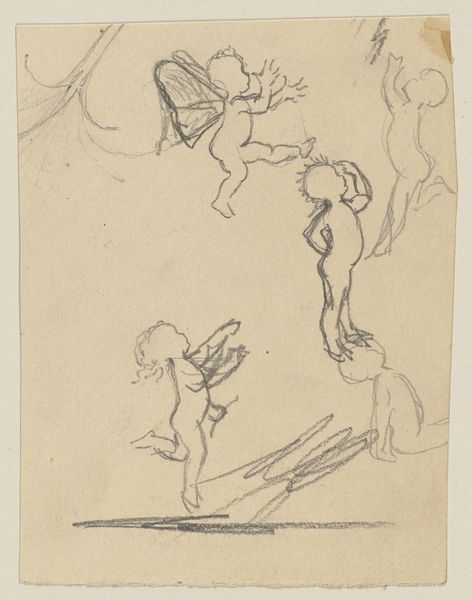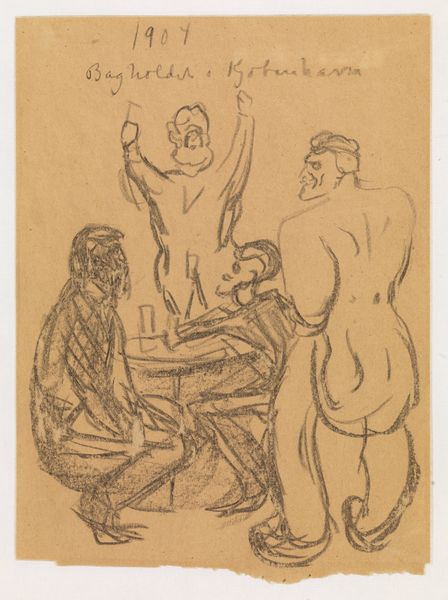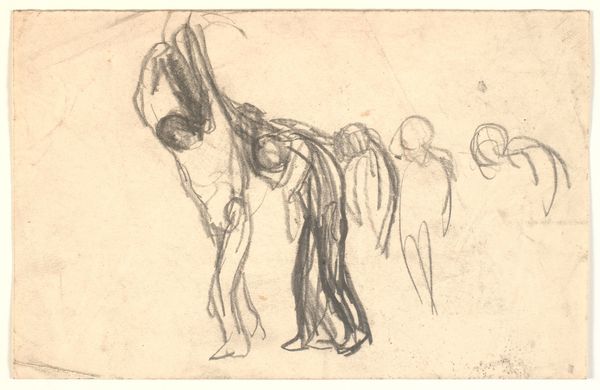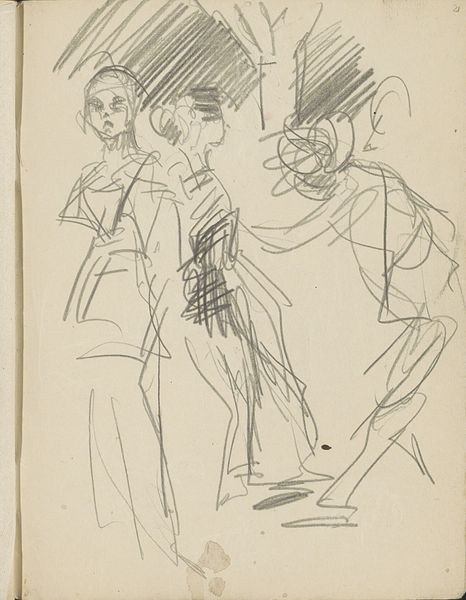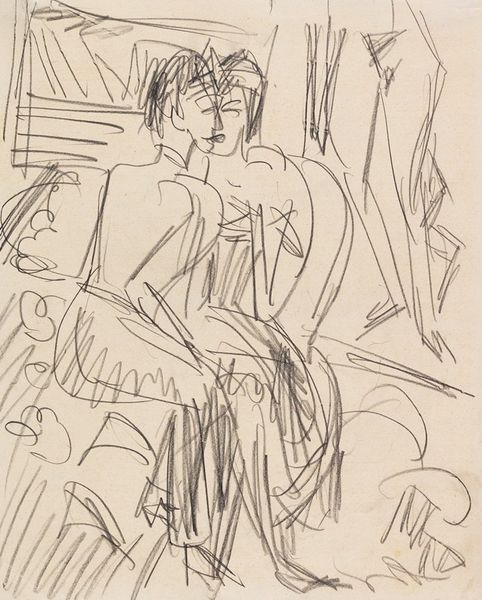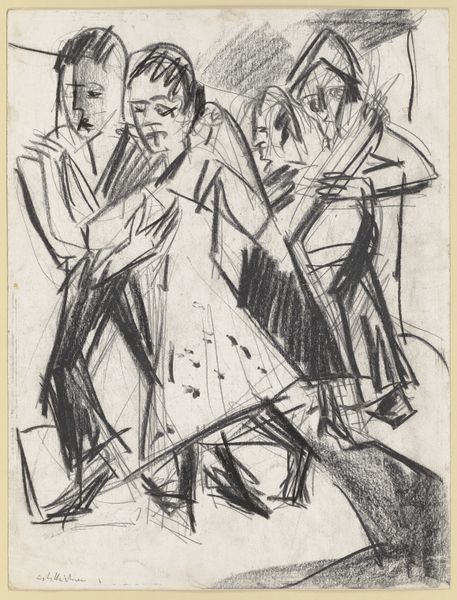
drawing, pencil
#
drawing
#
figuration
#
pencil
#
history-painting
#
realism
Dimensions: 205 mm (height) x 133 mm (width) (bladmaal)
Curator: Here we have Karl Isakson's "Lazarus' Opvækkelse," created in 1920. It’s a pencil drawing, currently held at the SMK, Statens Museum for Kunst. Editor: It has such a raw, urgent quality. The quick, sketchy lines give a real sense of movement and emotional intensity. Curator: Absolutely. Considering the historical context, following the first World War, there's a palpable feeling of seeking hope, perhaps even resurrection, in a world scarred by devastation. Editor: The figures, although only hinted at, really command attention. Lazarus on the left almost fades into the background, yet his posture indicates a stirring. What do you make of Isakson’s choices of pencil on paper, a quite humble medium? Curator: It’s fascinating isn’t it? This was a period of profound material shortages and shifts in societal values after the war. Isakson choosing pencil suggests a stripping down, a return to fundamentals of making, and questions the elitism often associated with painting in oils at the time. Pencil was accessible; a medium for everyone. Editor: And that limited palette—the absence of color, heightens the starkness and focuses our attention on the composition itself; that play of light and shadow, that expressive, linear rhythm! Look how the shading gives form to the figures and how the open spaces enhance the drama. Curator: Consider the economy of means Isakson used. A few strokes, a controlled application of pressure, and he conveys such profound emotional weight and spiritual yearning. What we see here isn’t just a biblical scene, but a study in human faith crafted from readily available materials in the era after a major upheaval. Editor: A testament to art’s power, really. Despite its apparent simplicity and readily-accessible tools, it conveys such a deep emotional narrative, and an engagement to basic visual forms. Curator: Exactly. By studying both form and the economic environment from which it comes, it allows us to really think about our perceptions of art. Editor: What a beautiful dance between line and meaning! Curator: Precisely, revealing the multilayered relationships in this drawing.
Comments
No comments
Be the first to comment and join the conversation on the ultimate creative platform.
